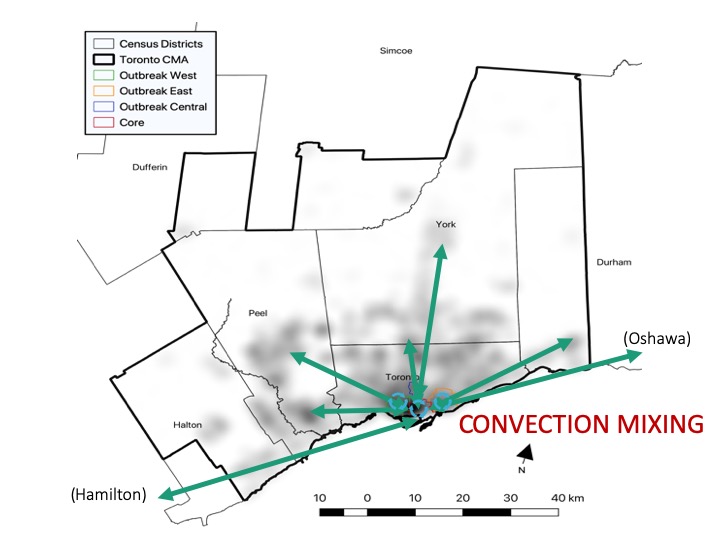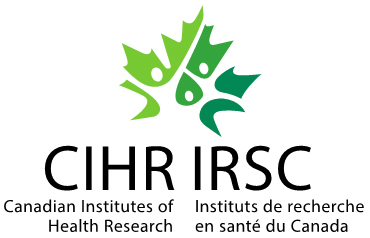We analyzed the sexual networks of gay, bisexual and other men who have sex who lived, worked, or socialized in Toronto in 2016 and saw that (see table)
- guys in the core had sex with guys in the core,
- guys in the outbreak areas had sex in the outbreak areas,
- guys in peripheral areas (e.g. suburbs) had sex in either the core or outbreak areas

We termed this “recurrent, cyclical movement of sexual partners from the suburbs, where the density of potential partners and sex is low, to downtown where the density of potential partners and sex is high, then back to the suburbs”, convection mixing (see figure).

Convection mixing led us to hypothesize that:
- Guys are traveling from peripheral suburban areas…
- Into the downtown STI core area looking for sex…
- Not realizing (or necessarily caring) that there are ongoing STI epidemics…
- Using HIV safer sex practices that do not necessarily protect them from bacterial STIs…
- Returning home possibly with an infection…
- Where they may conceal their sexual identity because of stigma and discrimination…
- And where sexual health resource are limited…
- Returning to the core area later.
This means peripheral/suburban areas may be reservoirs for STIs and may have an important role in the onward transmission and spread of STIs. More attention needs to be given to sexual and relationship dynamics in communities peripheral to the downtown urban core, such as the suburban, exurban, and rural communities.



